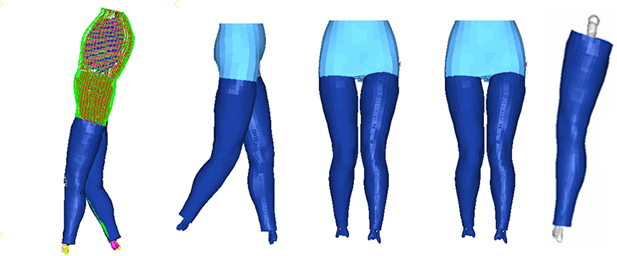FITT
Foundation for Innovation & Technology Transfer - IIT Delhi
Institution :
The Indian Institutes of Technology (popularly known as IITs) are institutions of national importance established through an Act of Parliament for fostering excellence in education. There are fifteen IITs at present, IIT Delhi being one of the original five set up in the late 1950s. Mechanical Engineering Department is one of the oldest departments of IIT Delhi. It is also one of the biggest departments with student strength of about 900. The department currently runs two undergraduate programmes, and four Master’s programs in addition to supporting Doctoral Research. Faculty of the department are also occupants of different chairs of the institute which include Henry Ford Chair, BHEL Chair, NTPC Chair and Mehra Chair.
IIT Delhi has established the institution FITT, IIT Delhi, as an independent organization, for undertaking consortium projects, technology development projects and other activities, leading to development of Technologies and commercialization thereof. FITT has at its disposal the infrastructure and the intellectual resources of IIT Delhi for addressing such value added activities of academic knowledge. FITT is license free assignees of institutional IPs.
The research group for Impact Biomechanics at IIT Delhi has developed expertise in the area of human body finite element analysis for impact modelling and human body tissue characterization and undertaken a number of technology development project under FITT. Over the last over 10 years the investigators have graduated 5 PhDs, over two dozen Master’s thesis and over 40 Journal publications in this and related areas. The group has done extensive work on existing HBMS like the THUMS and Madymo Human Body FE model. It has worked on generating hexahedral mesh of bones from MRI scans, development of human dummy models, positioning of dummy models, mesh modification of FE human lower and upper extremity models, optimization of structured and unstructured meshes and an assortment of related problems. It has published extensively in ALL these areas. The group has identified the issues to be addressed while repositioning a human body FE model. It has worked extensively on two different approaches to repositioning the Human Body FE Models. The first method is based on FE simulation and the second one is based on computer graphics technique (affine transformation and morphing). These have been implemented for the knee joint, the pelvic joint, as well as the upper extremity model (including the spine). The group has also done extensive work on scaling of the human body FE model which is in the process of being published.
Role in the project:
The role of FITT, IIT Delhi in this projecct is work on methods of repositioning and personalization of Finite Element Human Body Models. We use mesh modification techniques which are adapted from morphing techniques used in computer graphics. The advantage of these techniques over simulation based techniques is that they are fast, give a better mesh quality, can be controlled more easily and can incorporate known clinical data with ease.
Team:
Prof Anoop Chawla is the Henry For Chair Professor at Indian Institute of Technology, New Delhi and has an expertise in Computer Graphics, Information Technology, CAD and Impact Biomechanics. He has done his BTech in Mechanicla Engg from IIT Delhi and his PhD from Dept of Computer Science IIT Kanpur. He has collaborated with many organizations in India and outside, including, the Japan Automobile Research Institute, University of Birmingham, UK, University of Loughborough UK, University of Virginia, USA, All India Institute of medical Sciences, St Stephen's Hospital and companies like General Motors and Mercedez Benz. Amongst other areas of Impact Biomechanics, in these collborations he has worked on diferent aspects of characterization of human body tissues under impact conditions, development, validation and modifications of FE HBMs.
Illustrations of relevant activities:
 |
| Animations of the HBM repositioned about the knee joint, hip joint and the upper body flexed / extended |
